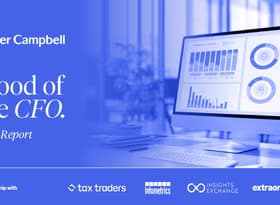Downside risks to interest rates a consolation from trade war

The fallout from the trade war has stolen headlines over the past week, as Kiwis worry about their plummeting KiwiSaver balances amid the global share market selloff. One of the key questions that always emerges from a major global economic event is “what does this mean for interest rates?”
In this article we explore the implications of tariffs for the US, how NZ could be affected, movements in long-term interest rates, and whether the outlook for monetary policy in New Zealand is changing due to global events.
Imminent supply shock to the US
The US will experience a negative supply shock, with higher prices due to import duties at the US border equivalent to a reduction in the supply of goods to the US. Demand from businesses and consumers in the US will be weaker as a result, as people’s real purchasing power is reduced, meaning that other important economic metrics will also deteriorate. Lower real GDP growth (-0.9 percentage points lower for 2025) is likely, along with higher unemployment (up 0.5 percentage points by the end of 2025).
The narrative from President Trump and his key advisors has varied wildly, between the tariffs being here to stay, or the tariffs being used as a negotiation tool with other countries. Some cracks have started to show with Elon Musk, who left the Department of Government Efficiency, taking aim at Trump’s senior trade adviser Peter Navarro and expressing his hopes for free trade between Europe and the US. As with the tariffs imposed on Canada and Mexico a couple of months ago, President Trump appears to be taking an “on again, off again” approach, with the latest news suggesting that any tariffs above the 10% baseline will be paused for three months (except for tariffs on China).
Some mitigating policies might come later that offset some of the negative outlook caused by higher tariffs. President Trump campaigned on deregulation and tax cuts, which would offset some of the higher price’s businesses face for their inputs and consumers face through higher prices for goods.
Weak growth from Asia to weigh on NZ
The effect for NZ is different to the US, with slower growth for our major trading partners the key factor hitting our economic outlook. Some of our major trading partners have been struck with significant tariffs, particularly China, which was handed an additional 50% tariff, for putting retaliatory tariffs in place in response to the initial net 54%. At the time of writing, total tariffs on Chinese imports to the US had been lifted to 125% (see Chart 1).
New Zealand is likely to experience a negative demand shock, as exports from our major trading partners become less competitive in the US due to high tariffs. Our trading partners will receive less revenue from selling their goods to the US, and therefore have less money to buy NZ-made goods. The negative effects of a pullback in demand for our goods is likely to be mitigated by the weaker exchange rate, which will provide some support to export earnings in NZ-dollar terms.
There remains a lot to play out in this trade war, with tariffs currently being paused, and the potential for them to be reduced from the initial announcement through negotiations with the US. We might also see a supply of cheaper products from heavily tariffed countries as they look to offload goods that were destined for the US. But the broader implications of this policy and the uncertainty surrounding it are negative, permanently slowing global growth if current policies persist.
Outlook for long-term rates unclear
US bond yields have been volatile over recent weeks as investors weigh up the risks arising from the US tariffs. The most recent peak in the US 10-year bond rate was 4.79% in mid-January (see Chart 2). Yields fell to 4.01% at the end of last week, but they have rebounded this week to 4.35%.
The yield on US 10-year bonds fell since mid-January as investors rotated out of US equities, which are in correction territory, and into safer securities. The recent rebound in US bond yields followed a weak US Treasury auction and speculation that foreign owners of US treasuries are selling bonds, driving up yields.
The outlook for longer-term interest rates will remain uncertain until there is some clarity over the dominant factor of the following drivers.
- Recession fears – driving increased demand for bonds as investors seek safer returns, pushing interest rates down.
- Inflation fears – if US inflation expectations rise further, investors would demand a higher return from bonds, decreasing demand, and pushing rates higher.
- Investor risk aversion – higher risk aversion results in investors fleeing riskier assets for safer bonds, increasing demand, and lowering rates. However, risk aversion might work against the US on this occasion, with investors preferring to invest in European or Japanese bonds instead.
Bond rates are likely to remain volatile while US policy swings continue, negotiations for more favourable trading conditions begin, or countries retaliate to President Trump’s tariffs.
Potential for more cuts to the OCR
As expected, the Reserve Bank yesterday cut the official cash rate by 25 basis points to 3.50%, its lowest level since October 2022. The Reserve Bank stated that it sees downside risks to the outlook for NZ inflation due to increased trade barriers weakening the global growth outlook.
This stance aligns with our view of the risks of slower global growth outweighing the inflationary pressures arising from higher inflation in the US. New Zealand is a small exporting nation, heavily reliant on demand for our exports from our major trading partners.
With inflation risks to the downside, we could see more cuts to the official cash rate than previously indicated in February’s Monetary Policy Statement, which signalled that the bottom of the easing cycle was around 3.00-3.25%. How much the Reserve Bank’s view has shifted will become clearer when it publishes a new forecast track at next month’s Monetary Policy Statement. Our updated view will be released as part of our wider economic forecasts next week, on Thursday 17 April.
- A statue of a woman standing in front of a building by Jimmy Woo. Copyright 2022. Licensed from Unsplash.
 Matthew Allman
Matthew Allman





